A week after our family trip to Ma’ayan Harod, I went on my lonesome on a guided birding tour in the northwest region of the Negev desert. Nearly eight years have passed since my last guided birding tour, a trip to the Hula Valley with birding expert Lior Kislev, and I felt that the time had come to treat myself again. However, it needed to be a tour that I couldn’t do easily alone, something that required the use of a guide.
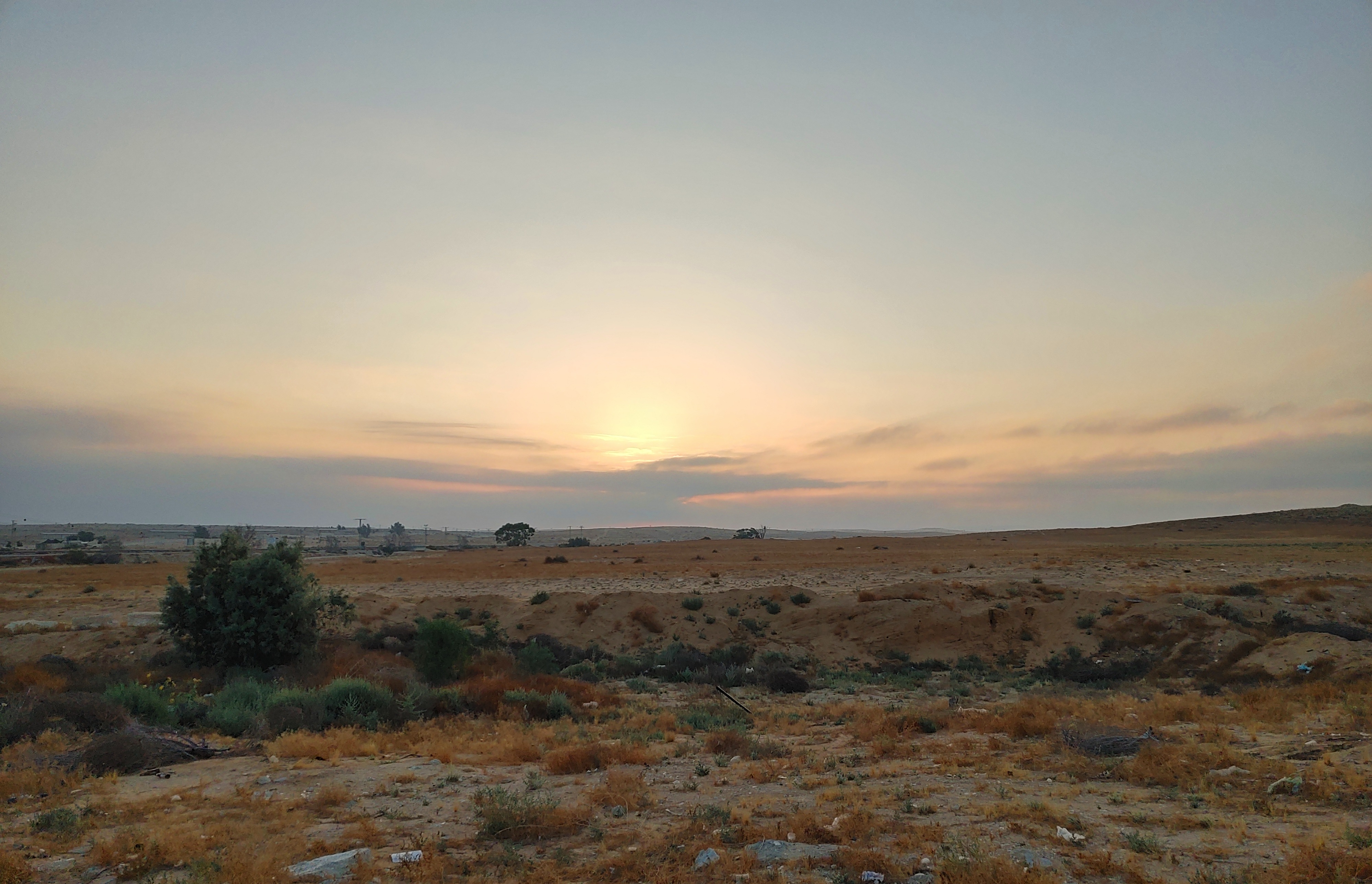
Sunrise over the desert
Thankfully, I had just the opportunity when I saw a guided tour being advertised that fit my criteria perfectly – a birding excursion in search of sandgrouse, led by the region’s expert Meidad Goren, director of the Ramat HaNegev Birding Center. I had never seen sandgrouse before, and the tour promised to attempt finding 3-4 species of them, all “lifers” for me.
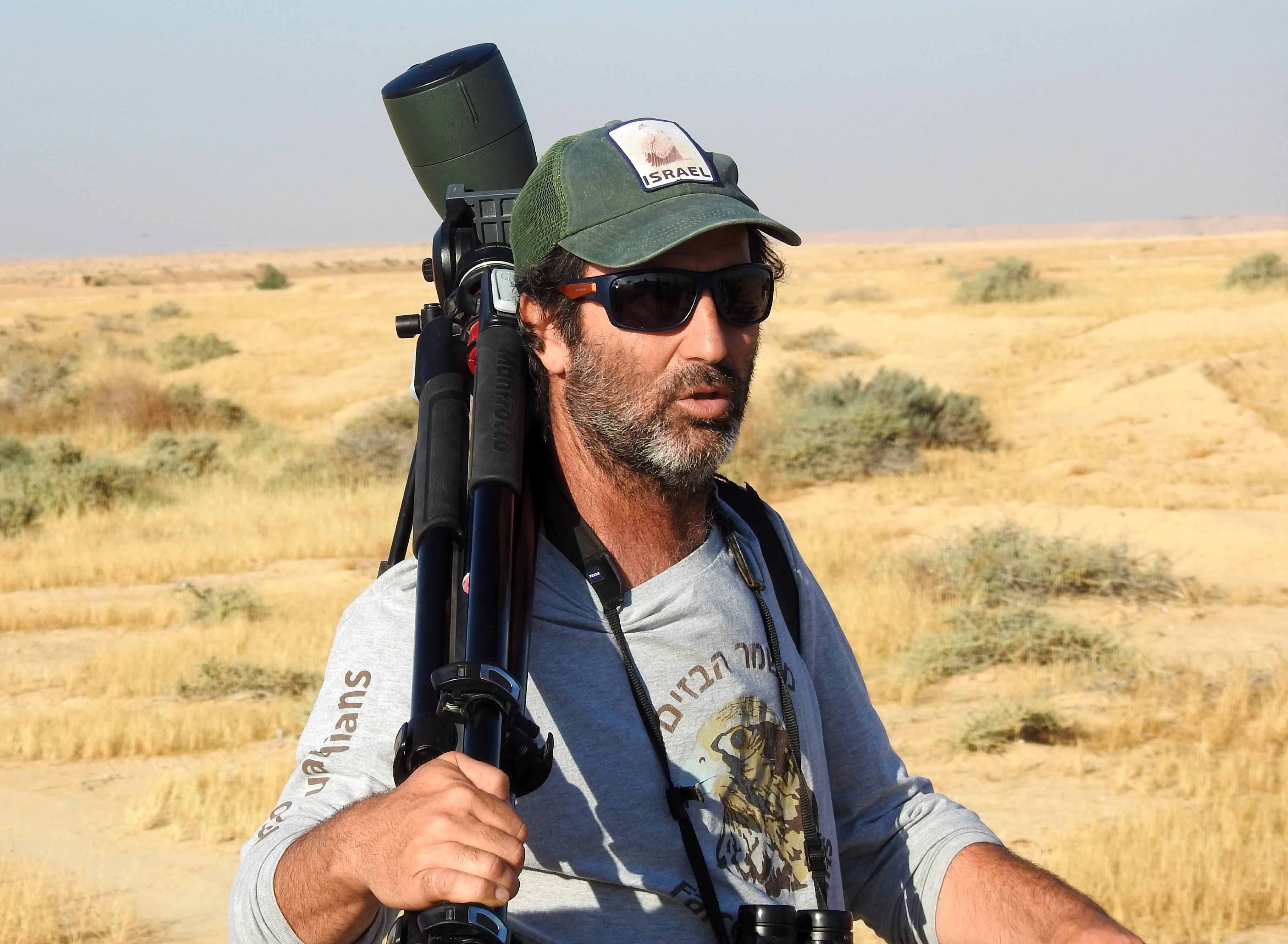
Birding tour guide Meidad Goren
I left Givat Shmuel in the wee hours of the morning, driving south past Be’er Sheva and down into the northwest Negev. We met up in the Nizzana region, more specifically the Kzi’ot gas station, at 6:00 AM and made introductions – the group numbering fifteen or so birders and birding enthusiasts. Meidad gave us a more detailed itinerary, informing us that the sandgrouse show was only going to start in a few hours, and outlining our target species for the interim.
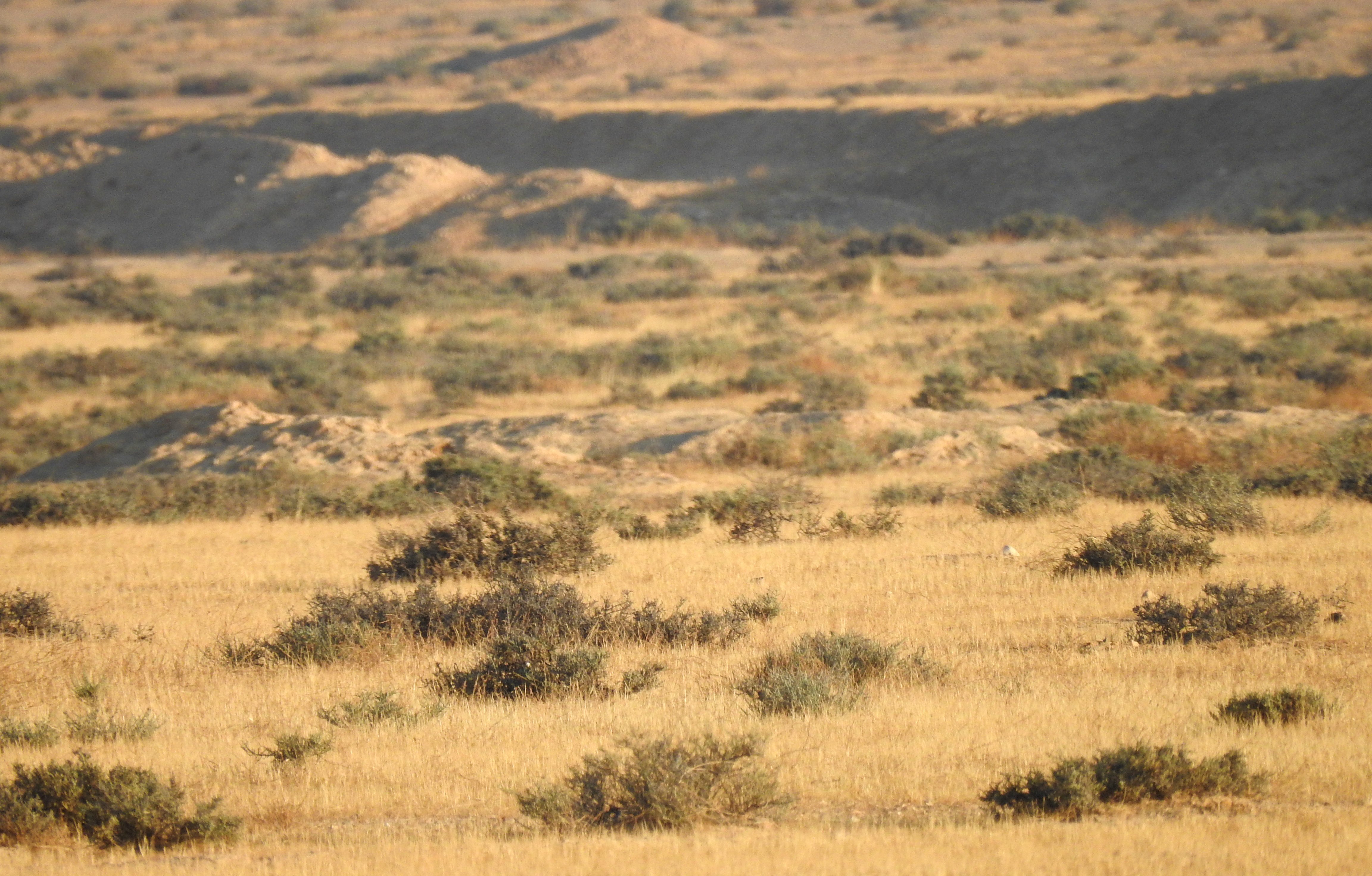
Cream-coloured courser habitat
We were to drive along the nearby old Mandatory road until we reached a choice location where cream-coloured coursers are known to be. This excited me, as this was another species which I had never seen before. We got in our cars and drove off to the old road, and even the drive yielded exciting sightings. First, we saw a cape hare seated peacefully – a potentially decent picture, had I reacted sooner (this being my first daytime sighting of a cape hare). Alas, it bounced off into the distance and we continued the drive.
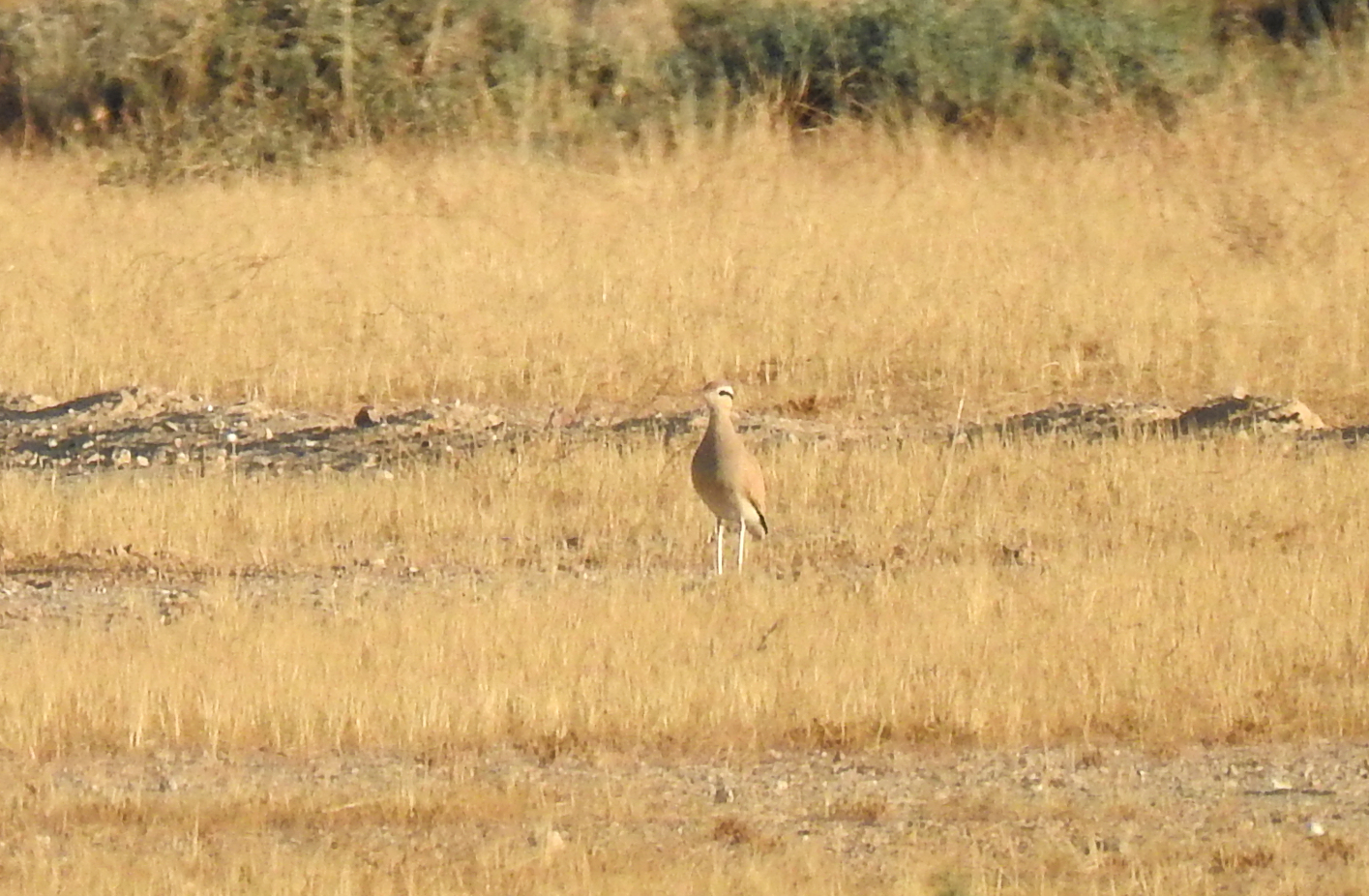
Closing in on my first cream-coloured courser
We saw a lone dorcas gazelle and before long we parked and disembarked, most members of the tour wielding binoculars, cameras and spotting scopes – or varied combinations thereof. Scanning the grassy land to the north of us with his scope, it wasn’t long before Meidad closed in on one cream-coloured courser, an elegant desert wader. It was an exciting moment for me as I snapped my first photo, deciding already that this trip was already a success.

Satisfaction
Shortly thereafter, another few coursers were spotted, on both sides of the road. A juvenile mourning wheatear and a few brown-necked ravens completed the scene of arid tranquillity. I thanked Meidad for introducing me to the coursers, and told him that I’d love to see more desert birds, species which I had yet to see. Arabian babblers came up, some of the tour members seeing one or two on our drive down the Mandatory road. I tried my hardest to spot one on the return journey, but alas, none were seen, and only a family of chukars darkened my path.
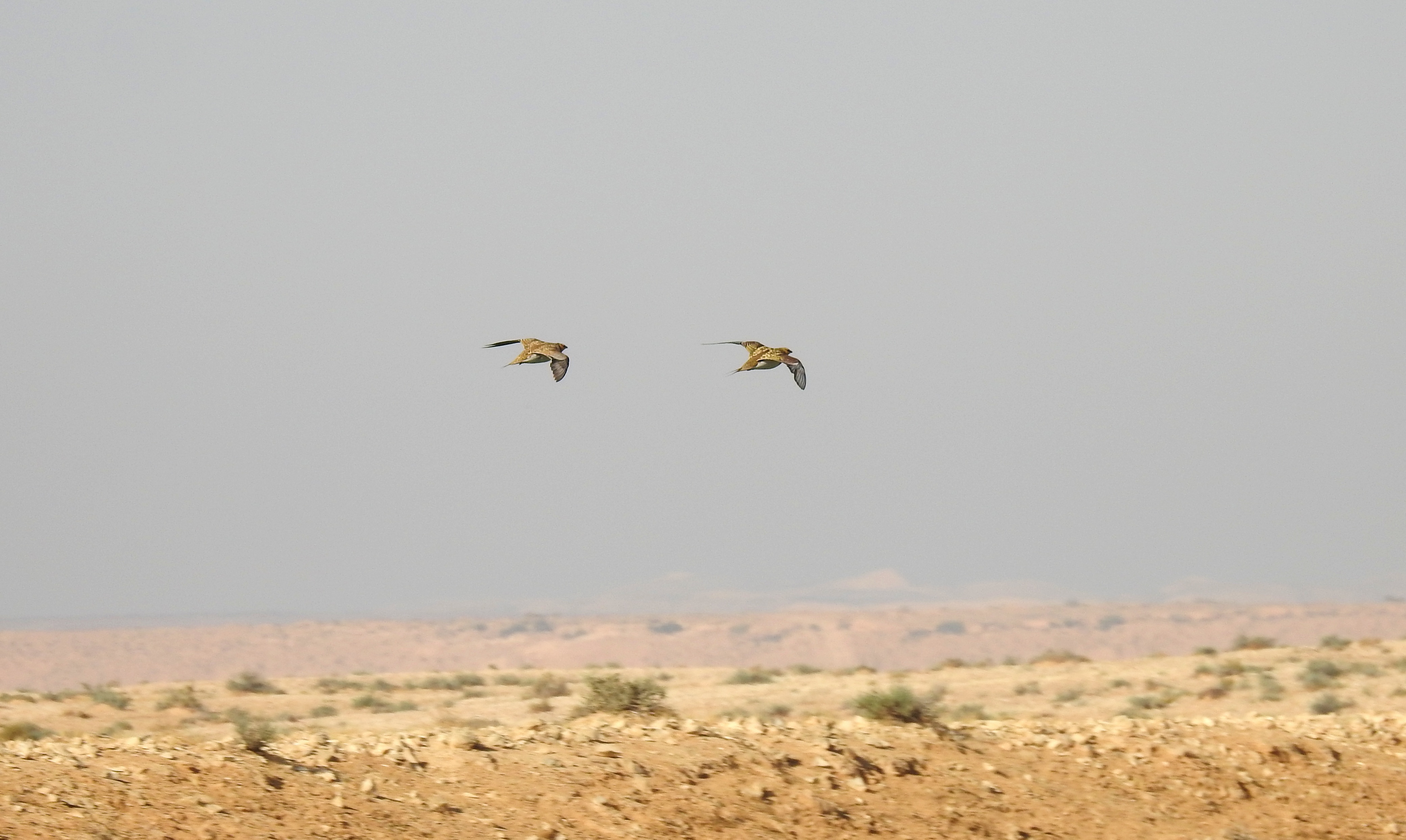
A pair of pin-tailed sandgrouse zipping by
Our next destination was the Nizzana military base water treatment pools, located alongside the Mifrasit military training base. Here, droves of sandgrouse fly in daily from their desert habitat to replenish themselves from the stagnant pools of water. Interestingly enough, the breeding adults (the males in particular) absorb water in their chest feathers and fly back to their thirsty chicks who aren’t yet ready to make the flight with the rest of the flock.
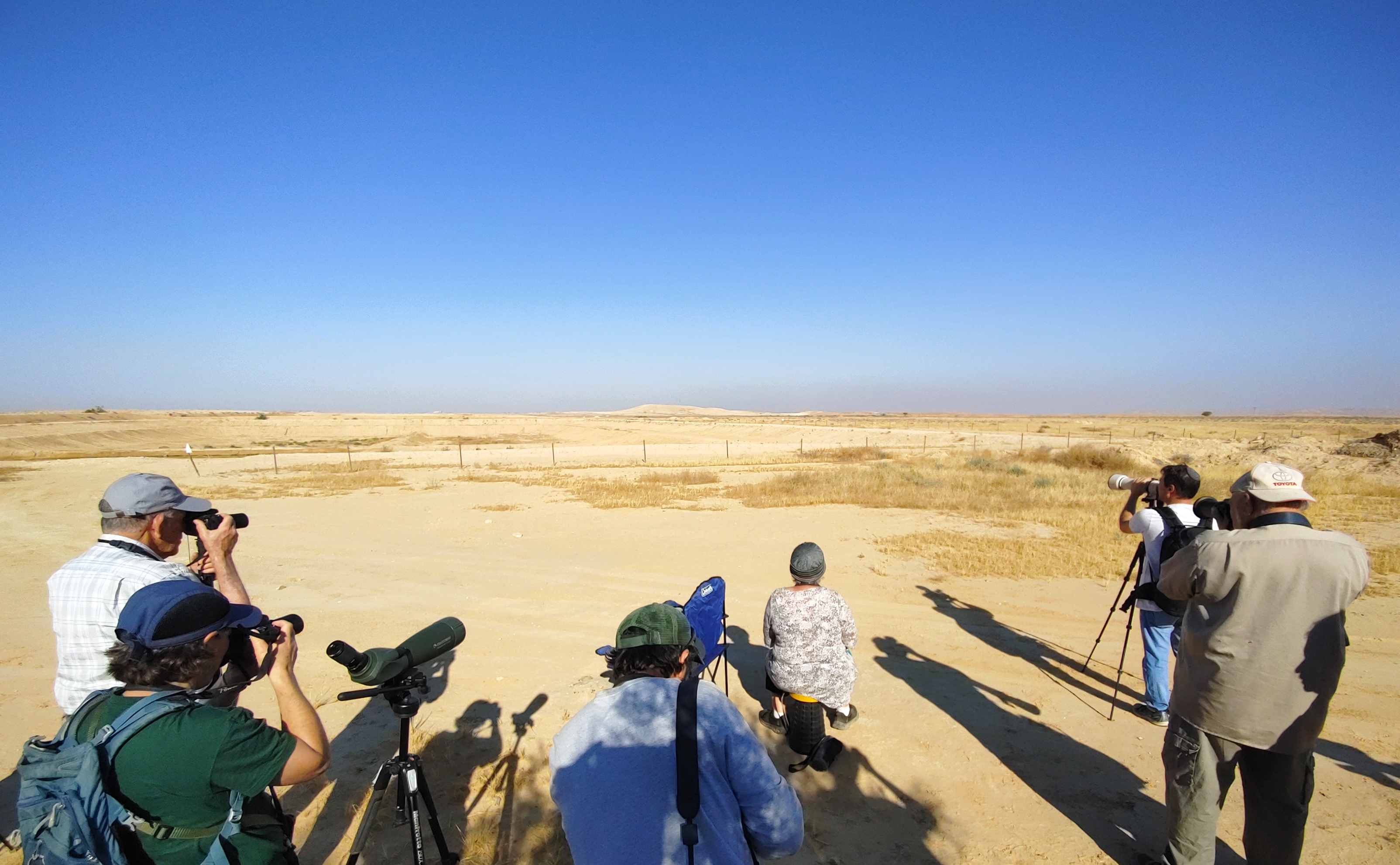
Everyone focusing on the sandgrouse
We gathered as a group in the mottled shade of a short evergreen tree and waited for the incoming sandgrouse. There were feral pigeons and other less-desirable birds flying about, distracting us from our mission. But then came the chirping coos of a single incoming spotted sandgrouse, scouting the waterhole before the flock arrived. It disappeared before we could find it in the clear blue skies, and before long more flight calls were heard.
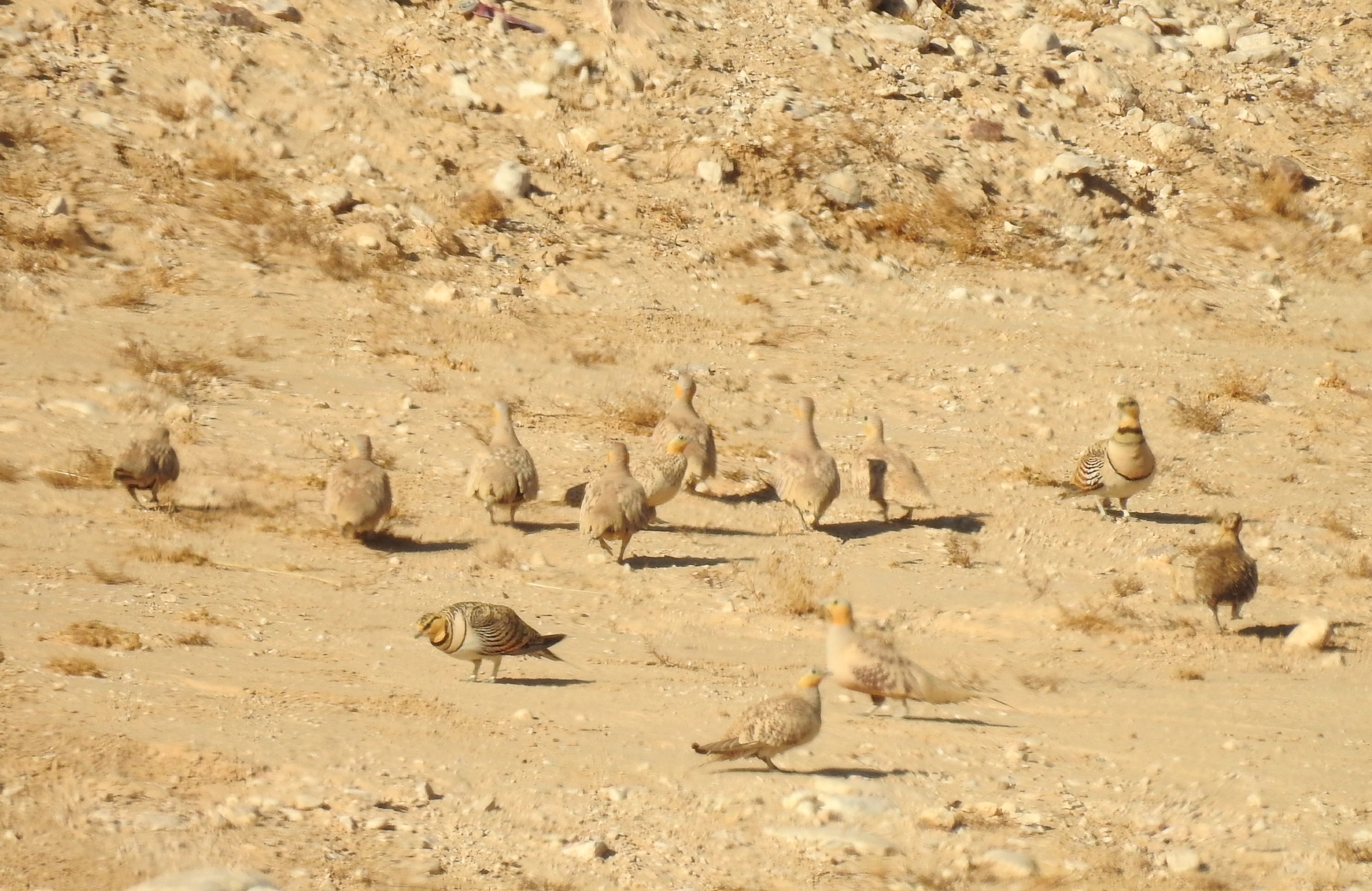
Spotted sandgrouse making an appearance from a distance
The spotted sandgrouse circled the dismal pool before slowly dropping down to waddle to the water’s edge. Sandgrouse are cautious birds, so we did our best to stay as still and inconspicuous as we could, allowing them to drink safely. The spotted sandgrouse were then joined by their cousins, the pin-tailed sandgrouse – an even more attractive bird.
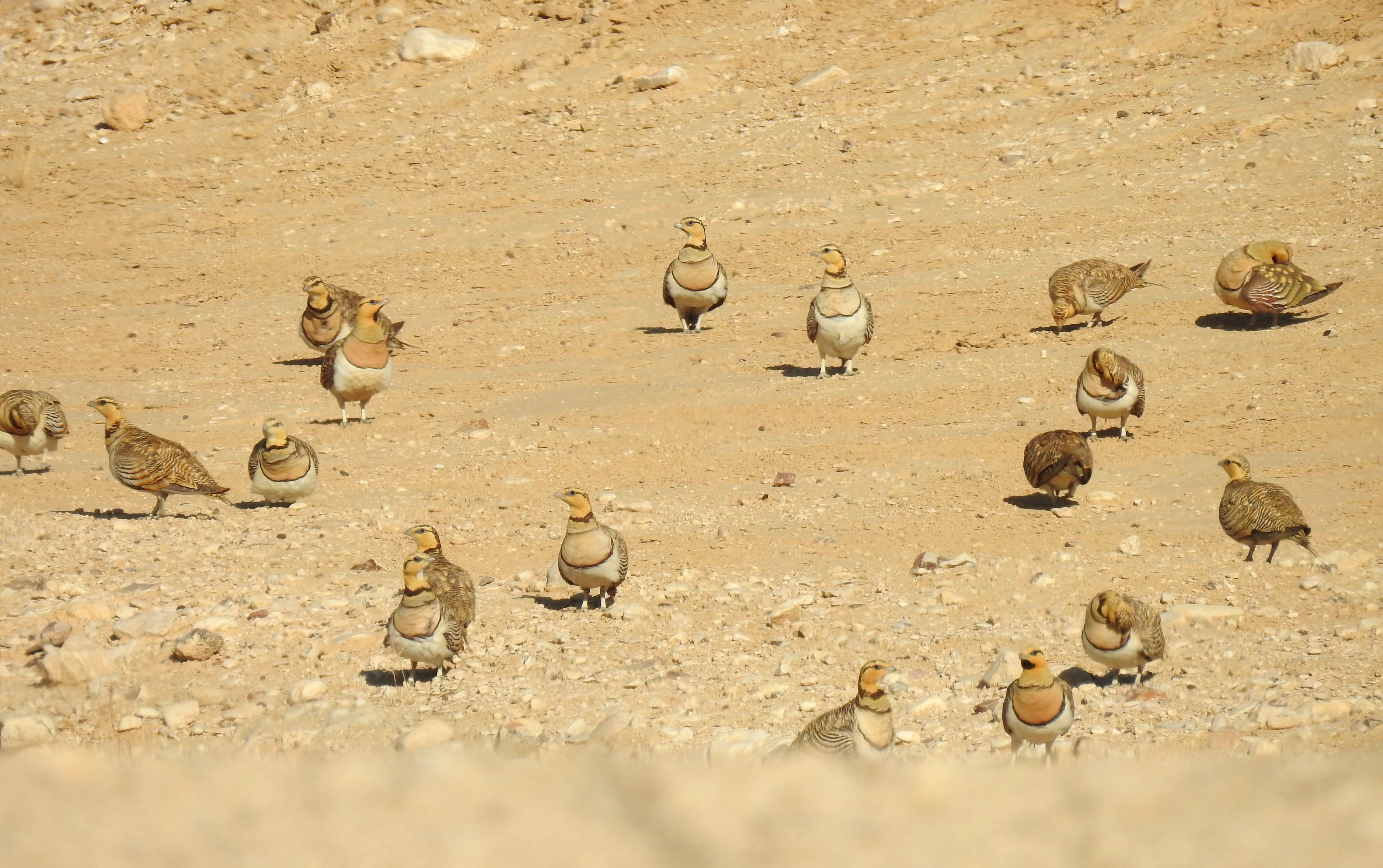
A small flock of pin-tailed sandgrouse
We watched and watched as small flocks of both species came and went, the air filled with flapping wings and exotic sounds. A pair of scrub warblers flitted by us, landing briefly on a nearly pile of sticks. Some brown-necked ravens patrolled nearby as well, never coming in for a tempting warm sip of grey water. Then, when we couldn’t imagine the scene any more entertaining, a pair of black-bellied sandgrouse came down to drink as well.
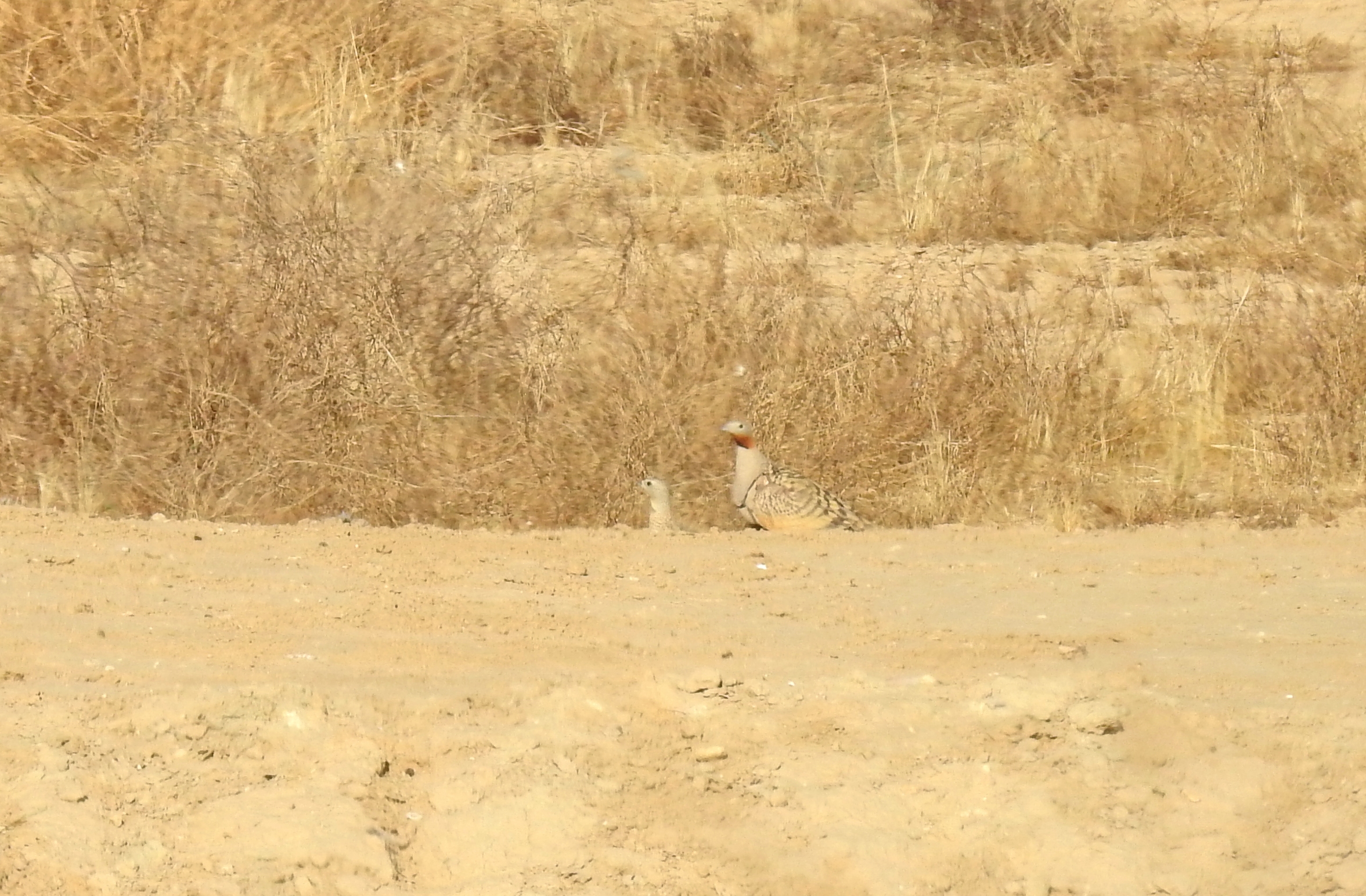
A pair of black-bellied sandgrouse
This made three new species of sandgrouse, none of which I had ever seen before. What’s interesting about this region is that it is a small overlap of four sandgrouse species, with one species living only in the southern Arava. In the past few decades, the sandgrouse population plummeted and then rose again, the future for these delicate, desert-living birds always filled with doubt.

The end of a successful tour
We spent a good hour or so with the sandgrouse, and then the sun began to really beat down as the morning progressed. Before we left, we saw an alpine swift zipping speedily over the pools, taking tiny sips from the water. It was the end of the tour, but we left with more than just a few “lifers” and an unnecessary amount of photos. We left with a better understanding of the fragile ecosystem in the desert, coupled with the persistent need for undisturbed water sources. This knowledge made us hopeful for the future, so that our children and grandchildren can also enjoy the sandgrouse shows.
More information about Israel’s sandgrouse population can be found HERE, in an article written by Meidad Goren.